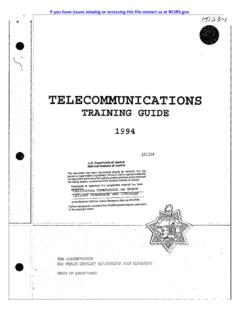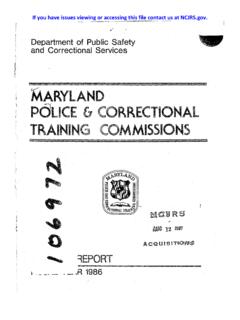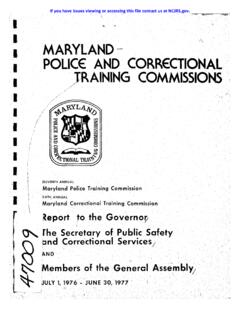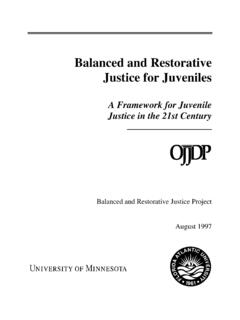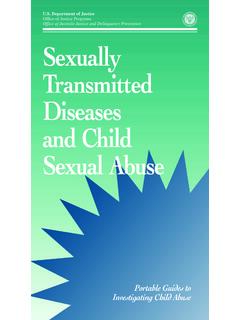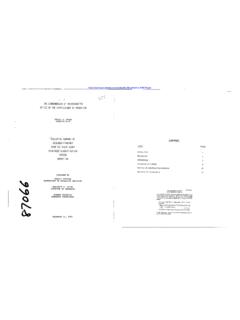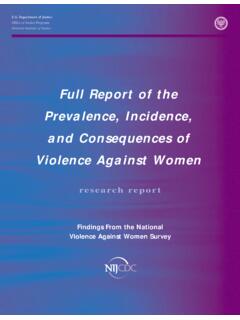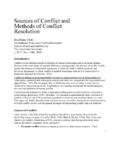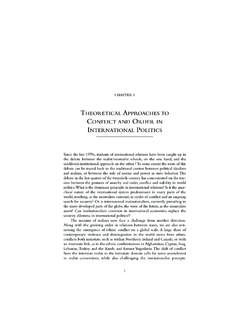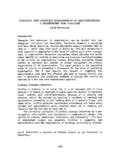Transcription of Conflict Resolution Education - ncjrs.gov
1 IConflict Resolution EducationA Guide to Implementing Programs inSchools, Youth-Serving Organizations, andCommunity and Juvenile Justice SettingsProgram ReportDonna Crawford and Richard BodineShay Bilchik, AdministratorOffice of Juvenile Justice and Delinquency Department of JusticeGerald N. Tirozzi, Assistant SecretaryOffice of Elementary and Secondary Department of EducationOctober 1996iiThe Office of Juvenile Justice and Delinquency Prevention is a component of the Office of JusticePrograms, which also includes the Bureau of Justice Assistance, the Bureau of Justice Statistics, theNational Institute of Justice, and the Office for Victims of Office of Elementary and Secondary Education is a component of the Department ofEducation.
2 Among the programs within the Office of Elementary and Secondary Education is theSafe and Drug-Free Schools is a natural, vital part of life. When Conflict is understood,it can become an opportunity to learn and create. The challengefor people in Conflict is to apply the principles of creative coopera-tion in their human Bodine, Donna Crawford, and Fred SchrumpfCreating the Peaceable School: A ComprehensiveProgram for Teaching Conflict ResolutionvSafe and orderly environments in our Nation s schools are essential to promoting high standards for learningand ensuring that all children have the opportunity to develop to their fullest potential.
3 No teacher shouldever fear to walk into a classroom, and no child should ever stay home from school because he or she is often, however, young people face conflicts before, during, and after school. They are subjected to bully-ing, teasing, and senseless, sometimes fatal, disputes over clothing and other possessions. Many of these con-flicts either begin at school, or they are brought into school from the home or the growing body of evidence suggests that we are not powerless to prevent these destructive behaviors. We canintervene successfully to prevent conflicts from escalating into violent acts by providing young people with theknowledge and skills needed to settle disputes peacefully.
4 Conflict Resolution Education can help bring aboutsignificant reductions in suspensions, disciplinary referrals, academic disruptions, playground fights, and fam-ily and sibling disputes. It is important to understand that Conflict Resolution Education is a critical componentof comprehensive, community-based efforts to prevent violence and reduce Resolution Education : A Guide to Implementing Programs in Schools, Youth-Serving Organizations, and Com-munity and Juvenile Justice Settings was developed for educators, juvenile justice practitioners, and others inyouth-serving organizations to heighten awareness of Conflict Resolution Education and its potential to helpsettle disputes peacefully in a variety of settings.
5 A joint project of the Department of Justice and Department of Education , this Guide provides background information on Conflict Resolution Education ;an overview of four widely used, promising, and effective approaches ; and guidance on how to initiate andimplement Conflict Resolution Education programs in various adults, we cannot solve young people s problems for them. We can, however, provide them with the knowl-edge, skills, and encouragement to resolve conflicts in a nonviolent manner, using words instead of fists orweapons. Conflict Resolution Education includes negotiation, mediation, and consensus decisionmaking, whichallow all parties involved to explore peaceful solutions to a Conflict .
6 When these problem-solving processesto Conflict and strife become a way of life, young people begin to value getting along instead of getting evenor getting their urge you to help make our schools and our communities safer places. We invite you to use this Guide as ameans of working with your schools, community organizations, and other youth-serving and juvenile justicesettings to give our youth the skills, techniques, and tools they need to learn and to resolve disputes in a safeand nonviolent RenoRichard W. RileyAttorney GeneralSecretary of EducationForewordviiThe Department of Justice (DOJ) and the Department of Education (ED) recognize the dedica-tion and commitment of Donni LeBoeuf, Senior Program Manager, Office of Juvenile Justice and Delin-quency Prevention, Office of Justice Programs, DOJ.
7 And Charlotte Gillespie, Group Leader, ProgramService Team, Safe and Drug-Free Schools Program, Office of Elementary and Secondary Education , diligence, work, and enthusiasm for this project have helped to bring the vision of this Guide to are indebted to Donna Crawford and Richard Bodine of the Illinois Institute for Dispute Resolution whospent countless hours writing and refining the manuscript to convey the variety of approaches within the fieldof Conflict Resolution Education and the potential of all these approaches for bringing about peaceful resolutionof disputes in a number of also thank Judith Filner of the National Institute for Dispute Resolution for her work in drafting an ini-tial outline for the
8 Manuscript and providing her knowledge of effective and promising programs. In addition,we thank the following members of the Conflict Resolution Education Planning Committee whose ideasand expertise helped bring this project to its completion: Lee Arbetman, Margery Baker, Shay Bilchik, No lBrennan, Eileen M. Garry, George Henderson, Emily Martin, William Modzeleski, Gail Padgett, John , and Judith are grateful to the following individuals for their counsel, guidance, and support throughout this project:Terry Amsler, Ron Ativissimo, Rebecca Atnafou, Vicki Baldwin, Linda Barnes-Robinson, Marcia Choo,Richard Cohen, Irene Cooper-Basch, Jared Curhan, Mary Czajkowski, Robin Delany-Shabazz, LarryDieringer, Dennis D.
9 Embry, Lucy Friedman, Lynn Glassman, Barbara Greenberg, Mark Greenberg,J. David Hawkins, Shelia Heen, Patti Holman, David Johnson, Ted Johnson, Marianne Klink, NancyLangan, Linda Lantieri, Linda Lausell, Ray Leal, Ra l Martinez, John Mazzarella, Pamela Moore, MarilynMoses, Cheryl Niro, Dennis Noonan, Gayle Olson-Raymer, Laura Otey, Kenneth E. Powell, Ellen Raider,Tom Roderick, Laura Parker Roerden, David Roush, Melinda Smith, Ronald Stephens, Susan Stroud,Marcia Sweedler, Annette Townley, Lloyd H. Van Bylevelt, Martin Walsh, and Terry Wheeler. This Guidewould not have been possible without the steadfast effort and careful review provided by all of these expertsand , we wish to express our appreciation to the staff of the Juvenile Justice Resource Center, especiallyLaurie Shah and Janet McNaughton, who gathered information, edited the manuscript, and prepared thedocument for publication.
10 Additionally, the Juvenile Justice Clearinghouse, under the guidance of CatherineDoyle, deserves our thanks for their work in bringing the final manuscript through the publication of 1 Purposes of Conflict Resolution 1 Responsible Citizenship .. 1 Violence Prevention and Safe Schools .. 2 Systemic Change .. 3 Rationale for Establishing Conflict Resolution 3 How the Guide Is 4 Chapter 1: Understanding Conflict 7 Origins of 7 Basic Psychological Needs .. 7 Limited Resources .. 7 Different Values .. 8 Responses to 9 Outcomes of Soft, Hard, and Principled Responses.
